








By most accounts, crime numbers appear to be dropping in Norfolk.
According to statistics from the Norfolk County OPP detachment, both violent crime and property crime has been dropping in 2025. The numbers were presented at the July 16 OPP Detachment Board meeting.
“All of those statistics are great numbers,” said Coun. Kim Huffman, chair of the detachment board.
The May-June period in 2025 saw 115 incidents of violent crime in the county, a 24.3 per cent drop from the same period in 2024, but still up slightly over May-June 2023, when there were 103 cases reported.
On the property crime front, the 169 incidents reported in May-June was a nearly 31.6 per cent decrease from the same time period in 2024 when there were 247 reports. That period in 2023 saw 265 incidents reported.
Year-to-date numbers for both categories also show decreases from last year, with violent crime down 26.6 per cent through June 2025 compared to the first half of 2024, and property crime down 20.4 per cent.
Crimes classified as “other” also saw slight decreases, down 9.8 per cent over May-June 2024 and down four per cent year-to-date.




Chris Glassford of Glassford Productions has been rapidly expanding his ribfest business, adding three new festivals to Your Local Ribfest’s 2025 summer tour, including the first Norfolk County Ribfest on July 18-20.
They also have festivals in Chatham (supporting food banks and YMCA), Woodstock, and three in Essex County – Leamington (partnering with Hogs for Hospice), LaSalle, and Tecumseh.



“During these economic times, it’s kind of a wild thing to do,” said Glassford. “We did not foresee the Donald Trump stuff going on. We just moved forward based on our success in Chatham, Woodstock and Leam-

ington. Those shows were doing really well.”
The July 18-20th ribfest held at the Norfolk County fairgrounds in Simcoe supported the Rotary Club of Norfolk Sunrise. Rotary volunteers were accepting donations at the main gate and raised $3,194.50 selling 50-50 tickets.
“My hope and plan is to celebrate these cities, utilize as many services as we can from their area, and boost up that community,” said Glassford. “So if we can help out someone like the Rotary or Abel Enterprises, that’s what gets these things going. I like to see the communities benefit from these kinds of things.”
Glassford said they had been trying to make the Norfolk County Ribfest happen for two or three years.
“The fairgrounds (Norfolk Agricultural Society) was looking at doing a ribfest, the Rotary was also looking at doing a ribfest… and it came to a point where we all just
kind of came together with that. The fairgrounds said, ‘You already have the formula, why don’t you work together?’
“They (Rotary Sunrise) were extremely open and accepting to it.”
The Norfolk County Ribfest opened its inaugural three-day festival with three rib vendors – Crazy Canuck Smokehouse from Brantford, King Smoke and Route 55.
“I don’t think it’s a ribfest until you have three, so I like to keep it at three as a starter. We originally had four, but… quality over quantity. We went with three of the best ribs that you’re going to get in Ontario and we focused on those.”
Glassford said they plan to come back to Simcoe in 2026, but it won’t be on the third weekend of July, a date that clashed with the annual Norfolk Pro Rodeo in nearby Nixon.
“We’re hoping to find something closer to our Wood-
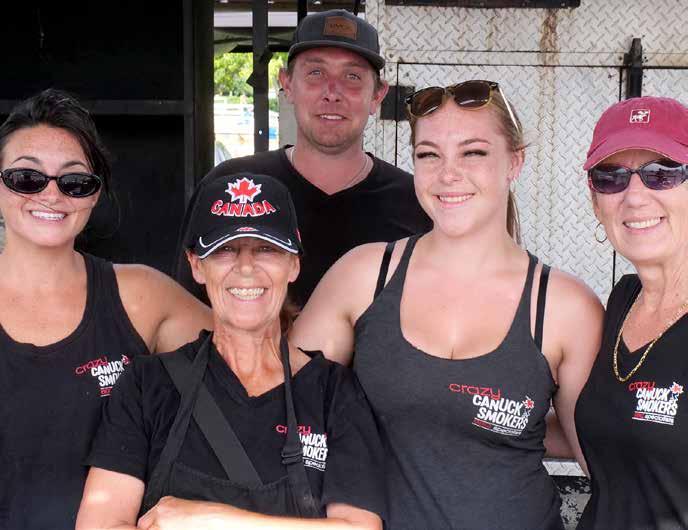

stock date (late May or early June). If we can make that date work, we’ll save on some transitioning from show to show, and rentals. The more you can save, the more you can do for the charitable organizations.”
One of Your Local Ribfest’s staples is a craft barbecue/ hot sauce competition. It didn’t happen this year in Simcoe – only one company entered – but they plan to try again next year.
“The sauce companies love these kind of events, being near barbecue. When you’re at a ribfest you’re thinking ‘I could be grilling when I get back home… this would go great on chicken or ribs…’ Spice companies, too. Spice companies do really well at ribfests.”
After the ribfest season concludes, Glassford will be moving on to the Chatham-Kent International Food Fest. He is also planning an outdoor Chatham-Kent New Year’s Eve event.

By Jake Grant
What Canadian province has the most earthquakes?
Alphabet Inc is the parent company of what corporation?
3. What two colors is Poland's flag? 4. What is the name of the bear in The Jungle Book?
5. In tennis, what word is used for a score of zero?
6. Which U.S. state was the first to join the Union after the original 13 colonies?
7. Which band released the 1967 album Sgt. Pepper's Lonely Hearts Club Band?
8. What color is Mike Wazowski?
9. What vitamin is commonly found in citrus fruits like oranges?
10. When was the First Academy Awards held?

Youth dancers from the Lisa Naves Dance Company have returned home with national accolades after a standout performance at the 2025 Dance Canada Solo Finals, held June 30 to July 6 at the historic Sanderson Centre in Brantford.
The prestigious event brought together top soloists from across Ontario, Manitoba, and Quebec, all of whom earned their place through a ‘golden ticket’ invitation - awarded to dancers who achieved exceptional scores during the 2025 Dance Canada competitive season.
The journey began for Lisa Naves Dance Company at the Dance Canada regional competition, held March 27-30 at the Americana Conference Resort in Niagara Falls. There, several dancers from the Simcoe and Brantford LNDC studios earned their golden tickets, securing their chance to compete for national titles such as Miss and Mister Dance Canada.
The Solo Finals offered more than just competition. Over the course of the week, more than 275 dancers participated in masterclasses across multiple genres, performed for industry professionals, and were interviewed by Dance Canada’s esteemed teaching faculty - creating a true pageant-style experience that tested both artistry and character.
Representing the studio in the Mini (9 & under) category were Ada Dedecker, Kylie Cutting, Clara Paxton, Samira Norman, Phoenix Abare, Scarlett Post, and Brice Sherk. In the Junior (10-12) category were Raya Antoniolli, Charlotte Moyer, Isla Smith and Peyton Tremblay.
Arwyn Carroll competed as the sole LNDC Teen (13–15) representative, while the Senior (16 & up) category featured Kaitlyn Devos, Ashleigh Durand, Chloe Filipcic, Kaitlyn Sanchuk, Elyse Gates, and Max Abonyi.
Several dancers achieved remarkable results:
• Phoenix Abare was named 10th Runner-Up in the Mini category for her solo Yellow, choreographed by Avery Howard.
• Scarlett Post earned 1st Runner-Up in the Mini category for her solo Show Off, choreographed by Jordyn Winger.
• Isla Smith was crowned Junior Miss Dance Canada 2025 for her solo The Genius of the Crowd, choreographed by Avery Howard.
• Chloe Filipcic earned 6th Runner-Up in the Senior category for her solo "Bound to You, choreographed by Vicki Fletcher.
• Max Abonyi claimed the title of Senior Mister Dance Canada 2025, for his solo Ain't No
Sunshine, choreographed by Teagan Davenport-Smith. This marks his second national title with Dance Canada.
“During the week at Dance Canada Solo Finals, I was thrilled to participate in several dance auditions and opening number rehearsals,” said Isla Smith. “Even if I felt nervous or uncomfortable, every time I stepped foot on that stage, I told myself ‘Be the best version of yourself. You’re allowed to mess up, so don’t get worked up if you do.’
“After I was crowned Junior Miss Dance Canada, I have to admit, I cried. I realized that my hard work and dedication paid off, and I was unbelievably proud of myself.”
A beaming Max Abonyi said, “When I was announced as Senior Mister, I felt an explosion of emotions running through my body, and almost lost complete control of my legs when receiving the title! This felt more deserving than my first title win, as I felt I had really improved over this past year and all my hard work and dedication had led to this moment. I cannot wait to spend another year with this amazing family!”
"I am so very proud of these dancers who push beyond their limits every day, but always remain so humble and kind,” said studio director Lisa Naves-Abonyi.




Water woes have been the topic of discussion across Ontario over the past few years.
Multiple municipalities are facing various water-related issues, including decades-old infrastructure, some dating back over 100 years. Obviously replacing and repairing these systems is not cheap.
As we know, a multi-year, multi-phase plan that would see drinking water piped into Norfolk, Six Nations, and throughout Haldimand County from a giant treatment plant in Nanticoke has been on the table for about four years. The price tag on this project rang in at about $450 million. A story in the Hamilton Spectator last March was titled: ‘Norfolk banking on flood of cash from province, Ottawa to fund $450-million water system.’ The first phase of the project to pipe water to Norfolk’s border at Townsend was $110 million.
I made it clear, despite some political jabbing at me, I would support what our counties were proposing but I was not convinced the federal and provincial governments would come up with the funds, especially given every mu-
nicipality is in the same boat.
The Ontario Budget 2025 allocated $2.3 billion over four years to housing-enabling infrastructure with only $1.3 billion earmarked for the Housing-Enabling Water Systems Fund. This puts the $450 million ask in perspective in my opinion and someone within government had told me quite some time ago the ask was far too rich.
I encouraged the need for a Plan B and even spoke about it on the campaign trail this winter. I was being realistic. Just a few weeks ago, the story appeared locally that Norfolk County was heading ‘back to the drawing board’ for water supply solutions. Good.
With our local demographic and financial realities in mind, I recently met with representatives from a Turkish outfit - Miranda Water Technologies. I am not a water expert, but this encounter gave me hope that perhaps a Plan B is closer than we think.
Miranda was founded in 2008 in Ankara, Turkey, mandated to deal with the world’s ever-increasing water management concerns. As their elevator speech says: “We develop innovative, modular, and sustainable solutions for communities, businesses, and industries worldwide.”
The way I understand it, modular water technology allows municipalities to unlock capacity without overhauling entire systems. Instead of planning 20 to 30 years down the road, municipalities can choose more flexible management options on a per development or project basis. Ontario has updated land use and housing policies, which enable our municipalities to approve developments that utilize decentralized or communal water and wastewater systems. This creates an exciting opportunity to take the pressure off existing infrastructure without locking taxpayers into multi-year capital expansion projects. Such technology is

Restoring small-town journalism, one community at a time!
Publisher
Stewart Grant • stew@granthaven.com
Editor
Chris Abbott • chris@granthaven.com
Graphic Design / Sales Inquiries
Michelle Foster • info@simcoeadvocate.com
Business Development
Heather Dunbar • heather@granthaven.com Administration
Jen Gaetan • jen@granthaven.com
Contributors
Alex Hunt, Lisa Timpf, Paul Knowles
36 Water St. St. Marys, ON, PO Box 2310 N4X 1A2 info@simcoeadvocate.com | 519.655.2341 | granthaven.com

also said to reduce environmental impact and improve system resilience.
Please note this is not an endorsement for Miranda Water Technologies as there might be others out there who undertake similar work. But I do believe these technologies are worth deeper consideration. I think within our current municipal framework, we must think outside the box, we must have a Plan B, and it behooves local leadership to look at all options available to the municipality. We know the taxpayer cannot afford more.
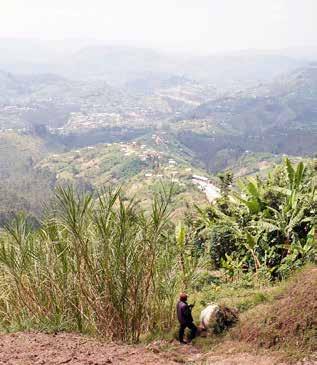
As an Authorized Wildlife Custodian under the Ministry of Natural Resources today, with 45 years of experience in wildlife rehabilitation of orphaned wildlife, the first years should have been more difficult having no place to find information, with few personal computers and no internet.
Yet wildlife rehabbers found each other, shared information, and found people willing to give up summer vacations and so much of their own lives 4-6 months every year… plus the cost, and the space in their homes.
By about 2000, there were over 200 of us when the MNR decided to get involved although they had less qualifications than we did! In the last 25 years they learned very little on what the average Home/Backyard
Rehabilitator did or needed, and little about the actual wildlife.
I was told by my first district rep that the last thing they needed was to represent rehabilitators. Their days were full as it was, and they admitted they knew little but most listened and learned. More rules were made with no consultation and many didn’t make sense unless you were financially able to run it as a business and able to purchase land, hire people, etc. (when most rehabbers have been home/backyard rehabbers). Then we got more rules and changes.
It has always been obvious the MNR didn’t want us. We are volunteers… yet never have they helped us financially or provided the education they should have. The parameters of government rules on how to use vol-
unteers have teen totally ignored.
The MNR keeps pretending to help us with information meetings, yet they don’t even recognize that there is no time during ‘baby season’ for a rehabber to give.
The education they expect us to have is either not available or not financially feasible to many. If I were to apply today with what I have garnered over those 45 years of experience, I would not be authorized. Yet, I have presented ‘Care of Orphaned Skunks’ in the United States and in Ontario at organized conferences. I written three booklets to help new rehabbers care for skunks, squirrels and raccoons because there is nothing else that gives what you need when you have your hands on the animal.
Could I morally recommend any-
Local resident Brooke Booker is heading to Toronto this fall to run the Toronto Waterfront Marathon, and she’s making a meaningful impact right here at home while doing it.
Booker is taking on her very first full marathon on Oct. 19, with a fundraising goal of $1,000 in support of Community Living Access, supporting people and their families in Norfolk and Haldimand,
For Brooke, running is deeply personal.
“You’re only up against yourself,” she said in a media release. “It’s not a team sport. It’s your own battle.”
Although she’s never attempted the 42.2 kilometre distance before, Brooke is approaching the experience with determination and discipline spending months preparing both mentally and physically.
“A marathon is a celebration of challenging yourself,” she says.
If crossing the finish line wasn’t enough of a challenge, Brooke is also using her journey to give back to the agency she proudly works for. Community Living Access advocates, empowers and supports individuals with developmental disabilities to live the lives they choose. Brooke takes pride in her work at Community Living Access and is grateful for the chance to give back through her marathon journey.
“Brooke’s determination is so inspiring!” says Tricia Morris, Executive Director of Community Living Access. “She’s not only taking on a major personal milestone, but she’s also raising awareness and support for our work!”
Supporters can help Brooke reach her $1,000 goal by visiting www.communitylivingaccess.ca/brookeruns to make a donation of any amount. Cash or cheque donations can also be dropped off in person at Community Living Access, 89 Culver Street, Simcoe. Every contribution brings Brooke one step closer to her $1,000 goal, and the finish line in Toronto.
“You don’t run a marathon to finish first. You run to complete it,” says Brooke.
And with the support of her community behind her, she’s determined to cross the finish line.

(SUBMITTED
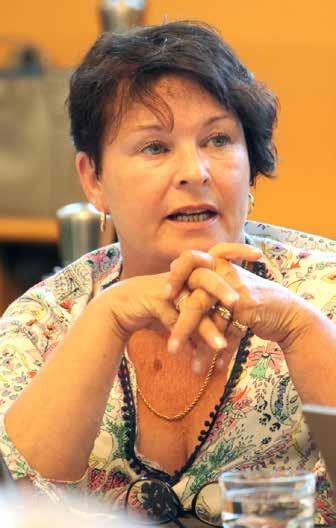
‘97 per cent drop in unfounded calls’ reported
one to become an Authorized Wildlife Custodian? NO!
How could I when the MNR doesn’t follow their own rules, even with inspections.
We should be partners with our reps, but we don’t even get to know them or them us. It seems the MNR trusts public opinion over their rehabilitators.
Instead of dropping in for a surprise inspection, which by their own rules they should have done, they wasted money and time in an overblown drug-style raid. They had no idea how to transport the animals they removed, not following any approved isolation/quarantine
protocols! They caused a family to lose their business, their home, their reputation and caused PTSD! They are still being dragged through the court system two years later?
Were we told anything? No. Sooo… who is next? You know it isn’t easy seeing a man with a gun at your front door at the best of times with a regular inspection. But full-blown drugs style raids!
Does the MNR assume we all must be involved in black market selling wildlife? Why would we when it is so easy to go out and trap one yourself?
Is there any trust or respect for the MNR… no. I have had experienc-
es of trust and respect, but that was years ago. It started to come back slowly in the more recent past, but I cannot morally encourage anyone to become authorized when they could be treated like criminals at any moment.
The Ontario government cares so little about wildlife we have left in Ontario, they want to retract the protection limitations of species at risk and our environment… why do I even think they should care and try to help the few humans who deal with helping wildlife?
Silly me.
Laurel A. Beechey Tillsonburg
As she presented the numbers, Staff Sgt. Catherine Braceland also pointed out the detachment is making progress with increasing public patrols.
“We’ve seen a steady increase with this, with our members going out into our communities,” she said.
Total patrol hours this year is over 3,000 hours as of the end of June, compared to 1,688 hours last year, Braceland said. Officers have also logged more motorcycle, marine and bicycle patrol hours.
Board members Michael Cruse said he’s noticed the increase anecdotally, in both Delhi and Simcoe.
“I’ve seen that a lot more than in the past,” he said, welcoming the increase in patrols.
The report noted a 97 per cent drop in unfounded calls year-to-date, a number Braceland attributed to improved reporting by officers.
However, Huffman did bring up a concern she’s heard from citizens in Delhi. According to the residents there was a rash of property crime, but when victims called the non-emergency police line to report it, staff essentially told them not to bother.
“It was just simply ‘go through your insurance, thank you very much’ and that’s the end of the call,” she said.
“How do we get accurate numbers of property crime if information is not being taken?”
Braceland said she’d look into it and discuss specifics with Huffman, to report back at the next meeting in September.
Grant Haven Media
A hurdle put up by the province’s transportation ministry appears to be the one thing keeping a Delhi property owner from building the commercial development Norfolk County councillors desire.
At the July 22 public hearing committee meeting, Gabriel Gasbarrini pitched a plan to build 25 single detached units at 10 Highway 59 in Delhi. The project would see smaller homes of around 1,000 square feet with smaller yard areas with an eye to provide decent and attainable housing for seniors. To do so, he requires zoning bylaw and official plan amendments to a section of the land to convert it from commercial to residential.
Councillors, however, view the property as an ideal area to build much needed commercial space.
“I find it hard to believe there could be a better location for commercial zoning than the intersection of two provincial highways,” said Coun. Chris Van Paassen, referring to Highways 59 and 3.
The problem for that, though, is that the Ministry of Transportation has said it won’t allow an additional entrance onto either highway.
“I do have the problem that the MTO won’t allow me to have access onto Highway 3 or 59 so how do I create a commercial designation when the only access I’m permitted is onto Hawtry Road?” Gasbarrini said.
Consultant John Vallee added he had little optimism the ministry would change its mind.
“There’s no way the MTO is going to allow access there. We’re simply too close to the existing intersection and they’ve made that extremely clear,” he said.
“I think the neighbours would not be happy at all if we proposed a commercial (development) with entrance from Hawtry road.”
His solution was the development geared to seniors. Gasbarrini said he moved to the area a few years ago, and wants to build something that’s a benefit.
“I’ve been here for seven years, I love the community and I really have no intention of doing anything that’s going to destroy it or cause problems for the people who live here,” he said.
Despite Vallee’s pessimism regarding the MTO, Van Paassen wondered if the municipality could reach out to MTO counterparts and see if there’s something that could be done, possibly even “fixing that entire intersection once and for all.”
No decisions were made at the meeting, which was simply to introduce the project and seek feedback.
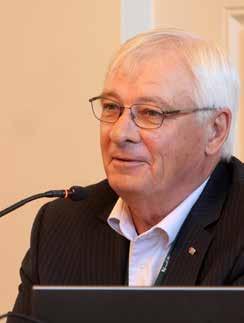
LUKE EDWARDS
Grant Haven Media
Recommendations on how to deal with an abandoned well on Norfolk county-owned Forestry Farm Road land won’t completely solve the issue of hydrogen sulfide entering the surface water environment, but it can go a long way to improving the situation.
“Perfect is the enemy of good and it may be very difficult get the concentration numbers low enough to put them in the creek but we can get them many orders of magnitude lower than they are now,” said Stewart Hamilton, a senior geochemist and hydrogeologist with Montrose Environmental Solutions Canada, as he presented findings on a study of the area to Norfolk council on July 22.
For a decade solutions have been sought for the abandoned gas well, which is believed to be the cause of high levels of hydrogen sulfide found in the surface water around the site. While the province has 30,000 abandoned wells that require attention, the Forestry Farm Road area is significant.
“This is by far the largest problem in Ontario. There’s no problem anywhere close to this problem,” Hamilton said. A study back in 2019 recommended capping the Forestry Farm Road well.
“However, after a prolonged period of time within the Abandoned Works Program, the Province was unable to find the well head and ‘cap’ the well,” a staff report said. Then, late last year the province helped Norfolk fund further studies in the area, including installing monitoring wells and further data collection. That extra study found a mix of good and bad.
“With additional data in hand, the current belief is that
there is no way to stop the issue. The underground pressure will find a way to relieve itself,” the report said.
“The additional study and data conclude that there is not a single location – there are multiple locations that the underground pressure will find to relieve the pressure forming deep underground.”
Instead, a new set of recommendations are aimed at continuing monitoring the area and installing a vacuum degasser. The studies found the degasser and a temporary collection system “could remove more than 90 per cent of the (hydrogen sulphide), reduce or eliminate the off-site smell and hugely decrease the hydrogen sulphide loading on the aquatic surface environment.”
However, the study said such a move “would trigger the application of MECP (Ministry of Environment, Conservation and Parks) air and water treatment requirements to unrealistically low standards and therefore a short-term exception should be sought from those requirements.”
Since the current amount of hydrogen sulphide entering surface water is tens of thousands of times above the regulatory limit, “reducing that by a factor of 10 in the short-term would likely be considered a worthy goal by all stakeholders.”
The recommendations also include continued monitoring, a full survey of additional groundwater discharge points, turning the focus of discharge over to the Spanjer Spring area, prioritizing nearby gas wells for decommissioning, and taking steps to reduce erosion.
A working group that involves Norfolk and ministries including health, environment and natural resources should also be struck, the report said. That group can work on longer term solutions.
Finally, an Environmental Assessment to address po-
tential treatment and discharge of groundwater is recommended as well.
Though long overdue, the recommendations are welcomed by nearby residents.
“We support and endorse the technical recommendations in the report, installing a degasser apparatus at the forestry farm location and a relief well is necessary,” said Paula Johgerden.
“Although this remedy was suggested over six years ago…we are pleased this is on the table now for the path forward.”
Johgerden said residents like her fear for what the discharge may mean for not only the local environment but also their own long-term health.
She also requested assurances that the project would be given high priority and stick to a well defined timeline.
“This issue, this long awaited progress, this stinking mess, needs to be given the priority it deserves,” she said.
For its part, councillors said they were just as eager to move the project forward. Much of it will require the expertise of provincial ministries and officials, as well as the need to overcome regulatory hurdles.
“This is a health issue…this is serious and it needs to be taken care of right away,” said Coun. Tom Masschaele.
The pressure relief well and degasser come with a price tag of $1.5 million, with the county seeking provincial funding to mitigate costs. There is some relatively inexpensive preliminary culvert work that county staff could start as they work with the province, said general manager of community and development services Bill Cridland.



LUKE EDWARDS Grant Haven Media
An apartment building that will include 10 rent-geared-to-income units is one step closer to reality.
Norfolk councillors approved a zoning bylaw amendment request by the Haldimand Norfolk Housing Corporation for a property on Gibralter Street near Ewell Street in Delhi. The amendment paves the way for the three-storey, 25-unit build.
“This is a long-awaited development project, it was at one time talked about as being 16 units, and now we’ve got 25 units,” said Ward 3 Coun. Michael Columbus.
The increase in unit total not only helps increase the number of affordable
LUKE EDWARDS Grant Haven Media
What some pegged as the natural evolution of the municipality might not be so natural after all.
Councillors ended up deferring a portion of the July 8 council-in-committee minutes that dealt with a proposal whistleblower hotline. At the previous meeting, councillors approved a report recommending implementing such a hotline, which would initially offer internal staff an anonymous way to report alleged waste or fraud. If it proved useful, the hotline would later be made available to the general public.
However, Coun. Chris Van Paassen raised the issue again at the July 22 council meeting.
“We just don’t need this,” he said. Councillors in attendance at the July 22 council meeting were split on the issue. Those who questioned the implementation, like Van Paassen, wondered if it was a solution in search of a problem. Others questioned what it would do to morale, even though staff at the July 8 meeting said other municipalities that implemented similar hotlines reported no adverse effects on morale.
Those who continued to support the
trial reiterated points made at the earlier meeting. Speaking to the potential to affect morale, Coun. Adam Veri said it was also possible that staff morale could take a hit if employees believed they had no safe way to report waste and fraud.
And while there’s no evidence that waste and fraud is widespread in the municipality, other supporters said the hotline makes sense for a growing Norfolk.
“It’s the logical next step in the evolution of our municipality,” said Coun. Alan Duthie, who chaired the meeting.
A vote to rescind the committee’s recommendation fell on a tie, with councillors Michael Columbus, Doug Brunton, Van Paassen, and Linda Vandendriessche voting to rescind the recommendation, while councillors Kim Huffman, Tom Masschaele, Veri and Duthie voted to keep the recommendation as is.
When that motion fell, an ensuing resolution to accept the recommendations as presented was required. It also fell in a tie vote along the same voting lines, leaving council stuck.
They ultimately voted to defer that portion of the minutes.
Mayor Amy Martin, who supported the hotline at the July 8 meeting, was absent from the July 22 meeting.
housing units in Norfolk, but it also reduces the cost to the municipality, explained supervisor of financial planning and reporting Amy Vesprini. Originally, the county was expected to provide $5 million to the project.
“However, the increased rental revenue due to the increased units has actually reduced the capital project contribution needed from the county to $1 million,” she said.
The project also now includes a new partner in the Norfolk Association for Community Living
Occupancy for the build could be as early as late 2026, though a staff report updating
councillors on the project said, “this aggressive timeline requires funding approvals from Norfolk County council, and applications for grants and funding to be completed and approved by end of September 2025.” With the new NACL partnership, the plan includes two, three-bedroom accessible apartments that can provide housing for six adults.
“Working with community partners allows the project to have long-term support towards sustainability and encourages thoughtful innovation into future projects,” the report said.
LUKE EDWARDS
Grant Haven Media
Norfolk County staff have been asked to review a stop sign they didn’t recommend installing in the first place.
Coun. Adam Veri, who represents the riding that includes Port Dover, said residents have spoken to him about a stop sign that was placed at the intersection of Nelson Street and Maple Boulevard in that community. The county installed the stop sign even though staff at the time said the intersection didn’t meet the technical warrants for a sign.
They made the decision following a 2021-2022 petition from nearby residents.Now it appears the residents have had a change of heart.
“In hindsight many of the residents recognized that was maybe not a great decision,” he said.
His motion said non-compliance has been an issue ever since the sign was installed.
“Backtracking is never something you

really want to do and it’s not the best use of resources, however, sometimes we as a community make a mistake,” he said.
The motion calls for a staff recommendation on whether the area should be modified, the sign removed, or other traffic measures installed.
Coun. Tom Masschaele, who seconded the motion, also asked for that whole section to be reviewed, including a nearby speed watch sign.
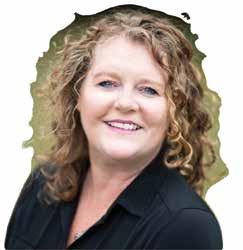

In the heart of Port Dover, a saloon is opening its doors and things are about to get ridiculous.
Lighthouse Festival debuts Pinkerton Comes to Prospect, a slapstick ode to classic westerns, from July 30 to August 16 in Port Dover and August 20-31 in Port Colborne.
It’s theatre, drinks and lakeside charm all wrapped into one unforgettable summer evening.
Lighthouse Festival’s newest swash-buckling spectacle, written by Jamie Williams and directed by Steven Gallagher, will feature a cast of colourful characters, along with 100 minutes of comedic jests and intrigue.
“Pinkerton started several years ago in our Play Development Program, it’s something we've been workshopping here at the theatre with Jamie for a number of
years,” said Don Kearney-Bourque, marketing communications manager at Lighthouse Festival Theatre. “It’s nice to see something that started off as an idea and has now moved to a stage which is very special.”
Set in 1890, Pinkerton Comes to Prospect is a fast-paced comedic spin on the classic western. When young surveyor Herschel Penkerten arrives in town, he’s quickly caught in a stir of mistaken identities, shady pasts and shootouts. With trouble brewing and romance on the line, not even the local Doc and Amos can keep things from going off the rails.
“You don’t see a lot of comedy westerns, they are often placed in a more modern setting, but it really is just this weird over the top thing, which is what a western was back in the day,” said Kearney-Bourque. “So, making it comedic wasn’t a huge step, there are over the top shootouts and silliness. It blends itself very well into comedy.”
Kearney-Bourque said that to make
each production an immersive experience, guests can order a drink that ties into the plotlines and themes of the current production. Drinks can be ordered in an alcoholic or non-alcoholic form.
The theatre space also supports the concept of relaxed performances that accommodate individuals that require special sensory, movement accommodations and other barriers that might seem to hinder a person’s theatre experience.
“We believe it’s important that everyone has the opportunity to experience live theatre, no matter their life circumstances,” said Kearney-Bourque. “Our actors are trained to respond to various situations with care, and we’ve built in many features to help reduce common barriers. We’re proud to offer these inclusive performances and to make theatre more accessible to all.”
Kearney-Bourque said the creative team started workshopping the production in 2018 but it was shelved as the pandemic struck. The play was revived during the
ALEX HUNT
Advocate Correspondent
A sunny day, a sizzling barbecue and a strong sense of community defined Aspira Cedar Crossing Retirement Living’s July 16 fundraiser.
The community gathered on the grounds of Aspira Cedar Crossing Retirement Living at 395 Cedar Street in Simcoe for a barbecue lunch with the residents. Most importantly, it was a day of social interaction, connection and fundraising.
“All proceeds raised from the community barbeque went directly to the Senior Support Services office,” said Brieann Gumbley, resident engagement manager at Aspira Cedar Crossing Retirement Living. “We do a lot of community events. We just thought barbecues go well with the summertime. We invite the locals to interact with our residents and it’s all for a good cause.”
The barbecue had plenty of hamburgers, cold beverages and handson games like cornhole and ladder ball. Gumbley said that earlier in the summer, Cedar Crossing launched a week-long seniors day camp which focused on different daily themes such as gardening, yoga, lemonade social and more.
“Events like this bring people out here so they can interact with our community. We had a great turnout at the
barbecue and had a lot of donations. We just ask that people donate what they can and if they can’t then that’s fine, we welcome everybody,” said Gumbley.
For the residents and locals, this barbecue acts as a social event for everyone. We all live in a small town, and I think it’s nice to be involved and get to know the people around us.”
For community events, Gumbley said that donations are welcome but not expected. Anyone can attend, meet residents, share stories, and learn more about the values of community spirit that define the organization and its mission.
Gumbley says that what makes Cedar Crossing stand out is that it builds a sense of family within the community.
“I truly value the relationships that I have made with some of the residents. I spend all my days with them, at every activity, organizing the events and it’s just wonderful,” said Gumbley. “We have a significant number of residents that have dementia and being constant in their day allows them to remember me which is very touching.”
The retirement home is no stranger when it comes to hosting events for its residents and the community. Gumbley says that the staff like to get the seniors moving and having fun and encourages the residents to join in the music nights, spring galas, and other
Play Development Festival in 2024, which went through various rewrites and changes. With positive audience feedback and a satisfied final draft, the play had formed its identity, finally hitting the stage this summer.
"We're very lucky to have both of our theatres in beautiful lakeside towns, there are many things to do around Port Dover and Port Colbourne,” said Kearney-Bourque. “There’s nothing to stop people from going to a winery in the afternoon and coming over to see a play in the evening. In Norfolk County, we have a vast number of attractions and outdoor activities to do, and people can make a day out of it.”
With the lakeside sights, comedy, and a classic western twist, Pinkerton Comes to Prospect promises a unique night out at the Lighthouse Festival. Between over-the -top shootouts, themed drinks, and inclusive performances, the show blends laughter and heart in the perfect summer setting for theatre lovers of all kinds.
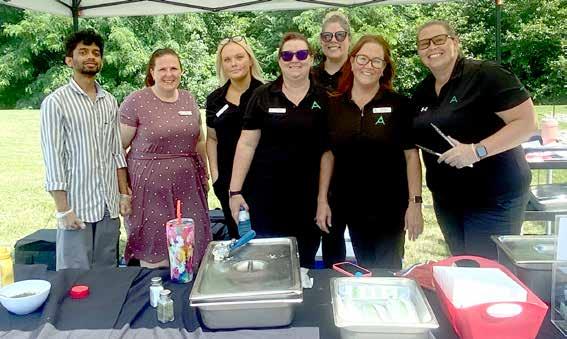
engaging occasions.
With laughter, grilled meals and generous hearts, Aspira Cedar Crossing Retirement Living embodied its mission to build community care. As residents and locals mingled, the event showcased the retirement home’s ongoing dedication to connection, compassion and creating meaningful moments through one gathering, one story, and one smile at a time.

LISA TIMPF Advocate Contributor
A group of 25 people combed the landscape within an assigned area to participate in the annual Long Point Butterfly Count on Saturday, July 5.
The Long Point count, sponsored by the Norfolk Field Naturalists, focusses on a 15-mile-diameter circle centered on Long Point Inner Bay.
Count organizer Adam Timpf notes that this year’s count benefited from beautiful weather. Despite that, when they came in from the field, many of the participants felt they hadn’t seen a lot of individual butterflies, or much diversity in species.
With the numbers mostly tallied (one group’s data was still outstanding), the number of species came in at or slightly above the 10-year average, while the number of individual butterflies also hovered around the 10-year average.
Among the highlights for the day were new count highs for two species, the Hickory Hairstreak and the Silvery Blue.
In addition, a Two-spotted Skipper was spotted during the count for the first time since 2003. Timpf notes there was some suspicion that the butterfly was out there, though it didn’t show itself to counters for a couple of decades.
He adds that it’s possible the presence of phragmites may have affected the numbers of Two-spotted Skippers in previous years. Now that phragmites has been cleaned up a bit, the butterfly populations might have rebounded.
Numbers of the Mulberry Wing Skipper, which was recorded for the first time in the Long Point count in 2020, tied the previous high. On the other hand, swallowtails like Eastern Tiger Swallowtails, Spicebush Swallowtails, and Black Swallowtails showed themselves in lower-than-usual numbers.
Timpf has been compiling the Long Point Butterfly Count since 2011. Despite almost 15 years in the role, he notes that count numbers are hard to predict in advance. To start with, every species “has different flight times.” Because of the early, warm spring, some butterflies may have been out in their adult form earlier than usual.
Factor in cold, wet periods, hot spells, and generally unpredictable weather, and it’s hard to guess in advance which butterflies, and how many, will show up on the assigned count day. In addition, the timing of rainfall can also influence when adult butterflies are on the wing.
Some specific species, however, did provide early indicators.
“One thing we did know was that some of the migratory butterflies might have lower counts,” Timpf says. “Winter and spring weather conditions in Texas indicate how many butterflies will make it up to us. We know that populations of some migratory butterflies weren’t going to build like in past years.”
Bearing out this advance information, the count showed a steep decline in the number of Red Admirals compared to last year. This species, says Timpf, can show big variances from year to year. The high for Red Admirals for the Long Point count was 521, but the number dropped to 19 the next year. A year with a low of nine was followed by 410 the following count.
“It’s less to do with things going on up here, and more with the early broods being hindered,” Timpf notes.
While data ebbs and flows, with some species showing boom or bust cycles, it’s the long-term trends that are important. Data from the Long Point Butterfly Count has been collected since 1993, the year the North American Butterfly Association (NABA) kicked off the count for the United States, Canada, and Mexico. Data from around 450 annual counts, each within a


15-mile assigned count circle, flows into the NABA totals.
The Long Point Butterfly Count area, Timpf says, includes a lot of protected areas. “If anything, more habitat is being created,” and participants are able to “survey the same sites as they have for the past ten years.” Not all count areas are so fortunate, with habitat loss being a major issue for many areas.
The NABA web site notes that the dataset from past counts “provided the primary source of butterfly count data for the blockbuster study published in Science: Rapid Butterfly Declines across the United States during the 21st Century.”
The Science study showed that in the
United States “butterflies have declined by a staggering 22 per cent in 20 years.” NABA says this serves as “a stark reminder of all the work that must be done to reverse this trend,” urging “immediate action to create a world where butterflies thrive, for the benefit of nature and people.”
The site goes on to add that “NABA’s critical contribution to this groundbreaking study was only possible due to decades of painstaking work by count volunteers,” making the work by those who trudge fields, forests, and roadsides seeking butterflies on count day well worth the effort.
More information about the North American Butterfly Count is available at https:// naba.org/.

By Ian Milmine
For over 30 years, the iconic yellow food truck has remained a fixture in the same spot in Port Dover.
Murphy’s Chip Wagon has been serving up classic fish and chips for generations, staying true to the belief that simplicity and consistency are key.
You won’t find an oversized menu or fleeting food trends here - just honest, time-tested meals made right every single time. Since 1993, Murphy’s Chip Wagon has held strong at the corner of Nelson Street and Main Street, delivering a nostalgic experience that echoes back to its humble beginnings.
It all began in Port Dover in the 1940s when Madge and Roy Murphy opened a small beachside shack. They were among the first to offer fresh lake perch along the beach, alongside cabbage rolls, hot dogs, and what would become a local legendthe Murphy Burger, topped with cottage roll ham and American cheese. These simple, satisfying offerings quickly earned a loyal following.
At one point in the late 1950s, Murphy’s even had a delivery service reminiscent of the milkman era, bringing burgers and home-cooked food right to local doorsteps and workplaces. It was, in many ways, the original DoorDash or Uber Eats - long before such ideas were born. While only a single photo and the memories of a few longtime residents remain, this is just one of the many rich, charming pieces of Murphy’s history.
In the early 1970s, Ralph Murphy - already a local legendtook over the family business. In 1976, he sold the original location to Jill & Dave’s, another popular Port Dover eatery at the corner of Walker and St. George. But the iconic Murphy Burger lived on, now paired with Jill and Dave’s famous fries and gravy, preserving the legacy for a new
generation of customers.
By the early 1990s, Ralph had transitioned into a satellite installation business but couldn't shake the family legacy. When a friend offered him a food truck, he saw an opportunity to revive Murphy’s, and balance his summer and winter ventures. He also passed on his work ethic and values to his daughter, Ashley, often bringing her along and teaching her not just how to cook, but how to lead with heart, discipline, and passion.
In 2011, Shelly Murphy brought back Murphy’s Diner on Main Street, reintroducing beloved items like the Murphy Burger and Roy’s Breakfast in a sit-down setting. Though the diner only lasted five years before Shelly moved on to new opportunities, it left a lasting impression. It was also where local chef Matt Long of Beachside Bites began to hone his culinary craft.
Ralph continued to operate the food truck with unwavering dedication, with Ashley frequently by his side - always encouraged to finish school and find her own path. After eight years with RBC, Ashley realized her passion didn’t lie behind a desk. Watching her father consider retirement, she knew it was her time to carry the torch.
In 2019, Ashley and her husband Nick (Van Hee) purchased the food truck from Ralph, officially continuing the family tradition. Ashley credits much of her success to Nick, who works long hours as an ironworker and still shows up without hesitation to help when needed. While he may often be behind the scenes, those who spot him at the truck are quick to show appreciation. Even their two daughters have put in time at the wagon, learning the business the same way Ashley once did - from the ground up.
Murphy’s doesn’t chase trends - it doesn’t have to. Its small, focused menu allows for flawless
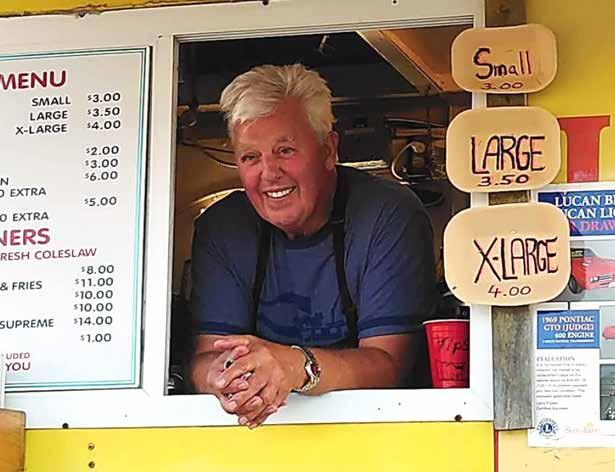
execution, where quality, quantity, and consistency are never compromised. Whether it’s Ashley’s welcoming smile or the same fish and chips Ralph served for three decades, every visit feels like a step back in time.
Generations of loyal customers continue to stop by, sharing stories, reliving memories, and celebrating the remarkable way Ashley has honoured her father’s legacy. Murphy’s isn’t just a food truck - it’s a Port Dover tradition, built on love, family, and great food done right. And so, the story of Murphy’s isn’t just about fish ‘n chips or burgers - it’s about family, tradition, and the kind of passion that spans generations. From a



















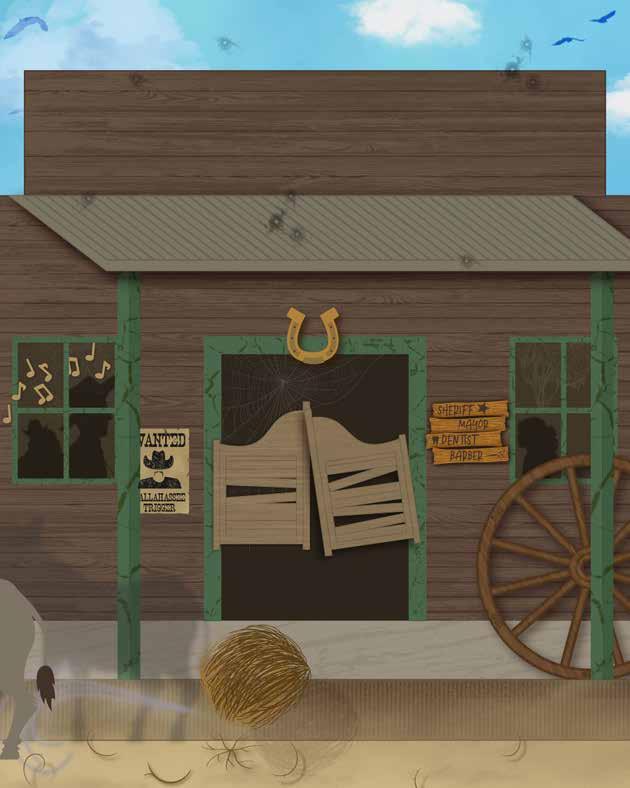



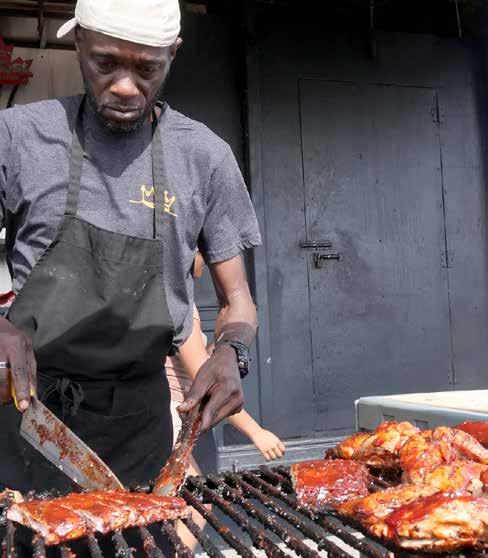




For years, Izzy Pender helped her grandparents run their produce business. Today, she and her partner are proud to carry that legacy forward at the Port Dover Silver Lake Market, with fresh food, familiar faces and a deep love for the market.
Down to Earth was the produce business owned Dennis McCutcheon and his wife Maxine Jenkins founded and operated for 25 years in Norfolk County. The couple grew and sold their goods at the different farmers markets in the area. Six months ago, the successful business owners passed on their life’s work to their 21-yearold granddaughter Izzy Pender and her 20-year-old boyfriend, Iain Macneil Ross.
“My grandfather was the one that taught me how to count cash, treat people with respect and be very friendly,” said Pender. “I was able to count money at the age of seven because of him. My grandfather was happy that he was passing along his business to me, but he did not want to let go, he was holding on a little bit.”
Pender said that over the years, her grandparents gradually stopped growing their own produce and instead built relationships with local farms and purchasing their fresh goods to sell at markets. Since acquiring the business, Pender and her boyfriend continued selling produce at the Port Dover market, with the hope of ex-
panding to the Simcoe Farmers Market.
Pender and Ross continue to maintain strong relationships with the local farms her grandfather once sourced from, while also expanding their network by building new connections with additional growers in the area.
“A challenge that I learned was making sure you know how much you need to spend on because it does get expensive from all the produce that we must buy,” said Pender. “It’s a little stressful but it’s worth it. We go every Friday, we make sure we get it the day before so it’s as fresh as it can be.”
After selling produce at the farmers market every Saturday, 8 a.m. to 1 p.m., Pender and Ross donate leftover produce to the Port Dover and Area Lifeline Foodbank to ensure nothing goes to waste.
Ross said that one of his favorite aspects of running the business with Pender is engaging with their client base, giving back to the community through foodbank donations and sourcing locally grown products.
Pender reflects on her past job, where the work environment was difficult and often left her feeling miserable. Now, running her own business, she finds joy in seeing familiar faces return, always smiling to support the couple’s growing business.
With Down to Earth, Pender and Ross are not only continuing the family legacy but building a future rooted in community, dedication, and connection. For them, it’s more than just produce, it’s a purpose.














CHRIS ABBOTT Editor
Eight seconds - that’s the goal for bull riders.
Tillsonburg’s Ashten Buzsik did not quite make it during the Norfolk Pro Rodeo at Timmermans Ranch, July 20, in Nixon. Buzsik, 22, “came down early” riding Dancing with the Devil.
“I would say that was one of my best rides this year,” said Buzsik, who is having a comeback season after breaking his leg late last year. “I’m getting closer and closer to that eight seconds.”
Only two of 14 bull riders successfully reached the eight-second mark during the three-day International Professional Rodeo Association sanctioned rodeo, presented by Rawhide Rodeo Company.
“The adrenaline rush is like no other,” said Buzsik. “The sense of accomplishment you get when you do ‘the impossible,’ when you cover the eight seconds… you’re doing something that most people think is impossible. And when you do it? I’ve never got that same feeling from anything other than bull riding.”
Buzsik, who grew up in Simcoe and now lives in Tillsonburg, is following in the footsteps of his uncle, Luke McCoag, who competed in Canada and the United States.
“My uncle was rodeo performing, so he kind of grew up in it. And because he was in it, I was at rodeos when I was a little kid. It’s always been a part of my life.”
Buzsik was 15 when he first rode a bull, or rather, attempted to ride his first bull. He did not last the eight seconds.
“Absolutely not,” Buzsik laughed. “It did not click right away… it was over just like that when I first did it. A blink of an eye and I was on the ground.
“No, it’s taken me years and years of practice.”
When not competing, he does his training at home and at a gym.
“I have what’s called a ‘bucking barrel.’ More or less, imagine a giant teeter-totter with a barrel on one end. You’re practicing the form – a bull’s either going to ‘head up’ or he’s going to kick, one of two things. I also have a stationary barrel – a barrel with four legs on the ground – and you can practice your form on that.”
He does not – and will not – ever ride ‘mechanical bulls’ often found in bars and festivals.
“Those are awful. I am not allowed to go on one of those… those are nothing like the real thing. They do not simulate it. If I were to get on one of those, it would form bad habits in my mind.
“When we practice, we practice perfect form. You don’t want to get lazy, you don’t want to practice bad form. Bull riding, being so fast, you don’t have time to think. The body is just reacting. You want to show your body what’s perfect, and your body can live on that.”
“It’s too fast to think. If you’re thinking
‘oh, the bull’s turning right’… you’re already off. You’re too slow.”
If you stay on eight seconds, scoring is determined by how you ride and the actions of the bull, which often repeats its kicking and turning patterns – but not always.
“You can only do the best that you can do. If you get a bull that doesn’t buck much, you better be in the centre, not hanging off the side.
“They do have a mind of their own - nine times out of 10 they may go left, but the time you are on them, of course they’re going to go right. So it’s best not to think like that when you’re riding.”
Bull riding is considered an extreme sport and there is risk of injury every time the riders compete.
“I would definitely rank it as one of the most dangerous sports… 100 per cent. I have always lived by the motto, if you’re not willing to deal with the pain of bull riding, you shouldn’t be in it, because it does happen that you will get hurt. You’re strapping yourself to a wild animal that weighs 1,500-2,000 pounds.
“Confidence is 110 per cent part of it. You’ve got to be the most confident person when you’re getting on that bull. That’s something I’ve been working on for years and years. You cannot have a single doubt in your mind because it will show up in your riding.”
Buzsik, who competes in rodeos almost every weekend from April-October, said his highest ranking, so far, has been 17th in the world.
“I’ve been to the Canadian finals up in Quebec… and I’ve been to Top 10 in Canada a couple times.”
He dreams of competing in the PRCA (The Professional Rodeo Cowboys Association), based in Colorado, the largest rodeo association in the world. The Calgary Stampede is just one of the major PRCA events.
Professional Bull Rider (PBR) events in London and Ottawa are two of the biggest rodeos in the province.
“The National High School Rodeo Association gets kids involved in high school and elementary school to compete at rodeos, and that’s done great in Ontario. With the PBR having more events here, I think it’s a sport that’s going to grow.”







CHRIS ABBOTT Editor
International hockey players, and players from across Canada, are coming to Oxford County to join the Warlords Hockey Academy.
The academy (www.oxfordprephockey. com) offers two hockey programs – Oxford Warlords (A/AA) and Oxford Sabres (AAA).
“Our goal with the Sabres is higher end AAA,” said Troy Lamoure, General Manager of Hockey Operations and head of skills development for the Warlords Hockey Academy.
“We wanted to add an elite level to what we’re doing. We’re following a prep academy model, rather than the standard Alliance/OMHA AAA route.”
The Sabres can recruit international players from anywhere in the world.
“It’s a bigger scale and there’s more things that go into it, the living side of things, the schooling side of things, when players are coming from different places in the world.”
The program includes both on-ice and off-ice training.
“Other programs, you have to go to outside sources to get power skating, or if you want a shooting session, dryland session, you have to go elsewhere. We are all-encompassing, you can do all these things within the program.”
The Sabres, who have 16U and 18U teams, are coming off an extremely successful 2024-25 season. That success has opened doors – more players have applied to their programs, and other larger programs are starting to take notice.
Last season, the Sabres had eight billet players. This coming season, 2025-26, they will have 26 billet players, including players from Belgium, France and Iceland.
Lamoure said their goal is to have a centralized billet program, focusing primarily on the Tillsonburg area, which helps create player bonds, often within walking distance of each other.
“If it’s centralized, you can carpool, which makes it easier for billet family schedules.
“We want to have families that have a child in the sport, or has been through the hockey process and understands the nature of things. Nutrition is a part of it – some kids are higher on nutrition than others.
“Having that bond, that connection… it’s their second home and you’re often going
to have a relationship with them the rest of your lives. You’re making an impact on that player’s journey.
“It is a time commitment, but we want families to understand that we work with all of our billet families, we want to help out as much as we can in that process.
“Our organization likes to get to know the billet family, have a few conversations, visit at their homes, sit down with them… making sure they understand they are taking in a student athlete, the ups and downs that come with that, and having that support system.
“The players are away from home and they need that comfortability, and that family atmosphere to help them make the transition into the new lifestyle they’re coming into.”
If you are interested in being a billet family, you can reach out to the Warlords Hockey Academy at whasabreshockey@ gmail.com .
Longer term they want to provide their own private school, but currently most Sabres attend Glendale High School in Tillsonburg.
“Growing up, I went to Glendale, had a great experience there, and I love the school. I like the teachers there - they are great educators. But we want to be flexible. We’re not saying ‘you have to go to Glendale…’ We want to keep it as cost-effective as possible.”
Playing in two leagues (North American Prep Hockey League and this year, United Tier 1 Hockey League), the Sabres play up to 70 games.
“The goal is to get better and better and grow the program every year… and it’s kind of grown exponentially. We want continual growth.
“We took a big jump last year, obviously had a lot of talent. I think we have moved into a true AAA program. We’ve drawn players from different AAA organizations, but we’re still looking at AA players. The difference between the good AA player and the lower end AAA player isn’t too big of a margin.”
The Warlords have 9U, 11U, 13U and 15U hockey teams.
“We have had players that have developed through that (Warlords) that have made the jump into the Sabres program. And that’s kind of the idea behind the program – people striving to make that jump into the next calibre.”
Over the last three seasons, the Sabres have recruited players from nine countries and seven Canadian provinces.
The goal is to find areas of the world


where players need better development and exposure. The Sabres are looking for players who want to find a home in Ontario, the hotbed in Canada for junior hockey.
“They love hockey, they just need more of it, more structure.”
“Some people just want to come for the experience. They want to live in Canada, they want to do schooling in Ontario. They want to experience the culture, the atmosphere.”
The Sabres also have local players from centres like London, Woodstock, Brant-

ford, and Haldimand and Norfolk Counties, and that interest has grown going into the 2025-26 season.
“It’s a cool experience for everyone, and that’s the goal when you have half a group of local players and half a group from Europe or different provinces, and it’s all different cultures, languages and lifestyles coming together.”
Warlords Hockey Academy is building its own training ice pad in Woodstock, he said, about one-third the size of an arena. During the season, they typically have three on-ice practices and two dryland sessions, and one or two games every week.
“We started with a 2,000 square foot gym, we’re now in a 6,000 square foot gym which has a synthetic ice pad, a video room, a player lounge, workout equipment… So we’re taking steps every year.”


‘Rwanda
The massive white rhino passed within 20 metres and continued southward, leaving the makings of a credit card commercial in her wake.
Our rental vehicle cost a chunk, elevated suspension and four-wheel-drive proved invaluable on Akagera National Park’s driving trails. A Kayonza Café breakfast of samosas, meatballs, beignet and excellent Rwandan coffee ran $6 Canadian. And our paperless entrance fee came in at $100 US a head.
But less than a half-hour into our African safari, the $40-US per day services of local guide Firmin Hirwa had already proven priceless.
“Rhino!” he exclaimed, pointing off in the distance.
In rapid Kinyarwanda, Hirwa passed directions to our Canadian host, Rwandan expatriate Jean-Claude Munyezamu. Pausing to let a young black mamba slither past, Munyezamu turned, heading back the way we had come. Hirwa expertly gauged the rhino’s path and pace, asking Munyezamu to stop and then back up 20 metres, a cape buffalo hoof from the previous evening’s lion kill banging off our left, rear wheel well.
Transfixed, we sat silently as the rhino covered the final 100 metres, angling directly in front of us and ambling onward, graceful for all her bulk.
“My name means lucky and today we are just that,” Hirwa said as our collectively held breaths released in awe and admiration.
We were on safari not in a zoo – but he and Akagera had delivered.


My unlikely path from Beaconsfield, Ont. to Akagera National Park, Rwanda led through a feature story with Munyezamu.
A survivor of the 1994 genocide against the Tutsi, he arrived in Canada as a refugee, settling in Calgary. Munyezamu started a soccer program to improve his public-housing neighbourhood, ultimately morphing into Umoja Community Mosaic (umojamosaic. org). The not-for-profit added a culturally sensitive food bank, after-school programs, leadership for young women and a popular community sewing circle. Inspired during a 2022 visit to Munye-
zamu’s former village Kabura, Umoja initiated diasporic outreach bringing school uniforms, sports equipment, fresh water and a basketball/volleyball court to the community’s Umurava Primary School. A second fresh-water source for the village centre and improving a road rendered impassable during the rainy season are ongoing goals.
“Come to Rwanda,” said Munyezamu, who makes it a practice to share annual visits.
Beginning with family members, 20 out of 20 (a random yet illustrative number)
people expressed significant reservations about a destination primarily recognized by Canadians as the site of horrific genocide.
Deeply respectful and desiring to learn how Munyezamu chose reconciliation over revenge, reassured by his declaration of safety and with a side hustle figuring out how my wife could check ‘African safari’ affordably off her bucket list, I only somewhat nervously boarded Ethiopian Airlines.
Full disclosure: my newspaper career was spent covering sports, council, knock-
CONTINUED FROM PAGE 17
ing together happy features and building an outdoors column, not international political commentary. I will not be starting now. Anyone seeking the 60,000-foot overview is encouraged to source alternatives.
My view of a very different Rwanda than I might have expected – ‘Rwanda Now’ if you will – is the ground-level account of a person sharing something of what he experienced.
It began with a tour of the Kigali Genocide Memorial, presenting an intense, no-holds-barred, matter-of-fact and more-balanced account than I might have anticipated. It encompassed Rwandan history, colonialism and other factors leading to genocide. That and the aftermath included victim exhibits, survivors’ personal accounts and importantly, ongoing efforts to reconcile and rebuild following unspeakable horror.
The memorial’s website (https://kgm.rw) includes an option to sign up for a virtual tour.
My day-one impression of Rwanda was that of a nation on the move with sidewalks full of bustling, uniformed students (school is free to Grade 9), mothers with babies, delivery people, joggers and well-dressed professionals headed to work. Personal, people-moving and transport vehicles own a share of the road based on size, but motorcycle taxis prized for their ability to skirt traffic dart everywhere as Munyezamu compares them to “a pack of wild dogs.”
On rural highways, “Sophia” photo radar units (so named after a famous smart robot) text transgressors significant fines, thereby lowering previous levels of vehicular carnage. Bicycles remain key to the transportation system for everything from additional humans (the cheapest taxi) to cans of milk, furniture and produce like crates of chickens or up to a half-dozen bunches of bananas to market. Riders dismount to push huge loads up Rwanda’s purported “thousand hills,” the latter a serious underestimation.
Crossing Kigali streets requires either “Rwandan instincts” or common sense. There is little doubt however, should the worst occur, the mess would be cleaned up quickly. Rather than providing social assistance, the country offers paid employment including street sanitation, Kigali’s graffiti-free byways regularly swept clean as a result.
We stayed inside a classic two-bedroom apartment with ensuite bathrooms, kitchenette, WiFi and gated 24-hour security costing $300 U.S a week. An omnipresent streetside

ATM equivalent seen everywhere from downtown Rwanda to isolated mountain villages sat outside. In essence, independent contractors under brightly coloured umbrellas staff desks holding thousands of Rwandan francs. The most remote corner of the country is well-connected by cell service exceeding that at our rural Canadian countryside. Clients present a code on their phone to proprietors who hand over cash, receiving a transaction percentage for their efforts.
The ATMs and the fact one sees women walking alone on city streets late at night allayed pre-trip fears. Munyezamu recommended protecting one’s cell phone from crimes of opportunity in busy markets for example, but overall, personal safety was not a concern. We breakfasted a short stroll away, past a medical centre typically filled with mothers and young children, part of universal health care our host says is provided via a variable geared-toincome contribution. A six-egg Spanish omelette at Emmanuel Ntuyenabo’s Good Mood Coffee Shop cost the equivalent of a toonie, with a burger and fries costing $5.
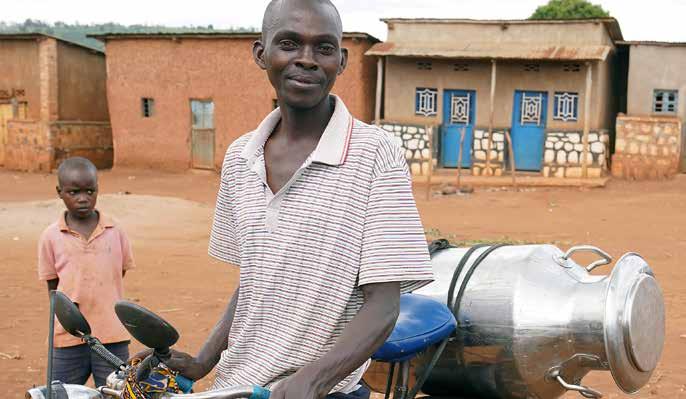
Ntuyenabo’s is partially farm-to-table, its rural base a progressive multi-hectare operation employing 11. In terms of agriculture, the lush nature of Rwanda’s hilly landscape was a surprise, in effect much of the country is a multi-crop garden. There are ongoing efforts to modernize smaller subsistence operations of under an acre.
Food was very affordable, chicken curry, rice and salad at the Kayonza Cafe running $14 Canadian, another $10 on top at Hotel de Mille Collines – the Hotel Rwanda. As a general rule of thumb, the more white people you see, the more it will cost. There definitely is a tourist versus local price Munyezamu helped us avoid on most occasions.
We mzungu (white people) were a curiosity, mildly so in Kigali, more so in Kabura where students crowded around, curious to discover what mzungu skin or hair feels like.
Soccer was queen; incredibly talented kids in sandals playing on every bit of available space with homemade balls historically made from banana leaves tied up in twine, evolved into plastic cores. Presenting a factory-made ball to a kid in a Vancouver Canucks jersey drew a crowd approaching 100, seemingly from nowhere, within five minutes.
Travelling the countryside offered striking contrasts: farm labourers hand-milling rice backdropped by subdivisions, translatable to Canadian counterparts, speaking to a growing middle class; women carrying stacks of fruit or vegetables on their head, corralling a baby on one hip while chatting on a cell phone held in their other hand;

CONTINUED FROM PAGE 18
Kigali mansions,the modern 10,000-seat BK Arena hosting Masai Ujuri’s Giants of Africa basketball tournament in both 2023 and 2025; and construction cranes busy as the capital begins to grow up, compared to neat and tidy plaster-faced and painted, baked mud-and-straw brick houses more prevalent in rural areas.
Progress includes rebuilding Akagera in conjunction with African Parks from devastation caused during the genocide and, subsequently, the 40,000 cattle accompanying returning refugees. Sharing profits and hiring locally encouraged regional support which, with regular patrols, has drastically reduced poaching. Animal populations have also been bolstered by a combination of transplantation and reintroduction. Lions came back in 2015, rising in number to an estimated 60 today, and rhino in 2017, re-qualifying Akagera as a “Big Five” (lion, leopard, elephant, rhino and cape buffalo) park.
We would finish with a “Big Three,” the penultimately shy leopard and elephants –approached with caution at the best of time – remaining elusive. Beyond rhino, buffalo and lions, we saw multiple species including amphibious hippos, giraffe, herds of impala, topi, zebra, waterbuck and feisty
warthogs among them, along with “life list” African birds.
It’s beyond arrogance to feel one can figure out a country in a couple of weeks, particularly viewing through a North America bias rather than African lens, despite our privilege in accompanying Munyezamu to places foreigners don’t go. But my consistent impression that, regardless where you are, whether you’re mzungu or otherwise, “People are pretty much people,” was only reinforced. In other words, the great majority of us are just trying to pay our bills, have a little fun, feel safe and secure, and believe in some form of a better future for our children. And that Rwanda seems to be striving to build opportunities that, through an accident of privileged geographical birth in Canada, we tend to take for granted.
Unquestionably, the nation faces ongoing challenges, but an initial sense of a narrative moving forward, a country and its people seeing the potential benefits and being willing to put in the work required, was not changed. Neither was the thought it’s a pretty good place for a tourist to experience Africa.
And even if the elephants and leopards didn’t cooperate, that only provided one more reason to return.





humble beachside shack in the 1940s to a bright yellow food truck parked proudly in Port Dover, Murphy’s has stayed true to what matters most: great food, hard work, and heartfelt connections.
As Ashley and her family continue to serve the community with the same spirit and dedication that started it all, one thing is clear - Murphy’s isn’t just a place to eat, it’s a Port Dover legacy that lives on with every bite.
I would like to give a special thank you
to Helen Bingleman and Sandi Brown of Port Dover. Their firsthand knowledge and time capsule of Murphy’s history was a great help sharing the history of Murphy’s.
Ian Milmine is the Facebook administrator for ‘What’s For Dinner Norfolk County?’ To share your feedback on his monthly Norfolk food column - or ask him questions – email Ian at imilmine@hotmail.com



I show up daily, but I never speak. The weather report
You find me funny, yet I don't laugh. The comics section
I’m filled with facts, but I’m gone tomorrow.
Yesterday’s paper
The more you take, the more you leave behind.
Footsteps
Why can’t your nose be 12 inches long?
Because then it’d be a foot!
Why did the bicycle fall over? It was two-tired!
Meet our Pet of the Week:
Mountaineer is a 2-year-old grey Domestic Shorthair mix with a strong, independent spirit. As part of the Barn Buddy/Working Cat program at the Simcoe and District Humane Society, she’s perfect for a barn, workshop, or rural home in need of natural pest control. Spayed and not declawed, Mountaineer is ready to get to work. If you're looking for a low-maintenance, outdoor-savvy cat, she’s your girl.


MONDAY, AUGUST 4
Family Day Camp
3:00pm - 7:00pm
St. Peter’s Lutheran Church will be hosting a Family Day camp on Monday, August 4, 2025, 3:00 – 7:00 pm at Homegrown Hideaway. Enjoy lawn games, floating/splashing in the river, making a craft and more! Please bring your own food, picnic style. Hot dogs will be provided. Join us around the campfire for a devotion, sing-along and marshmallow roasting. Let us know you are coming for hot dog and marshmallow supplies! Email stpetersnorfolk@gmail.com or call/ text Caroline at 519-909-9852.
St. Peter’s Lutheran Church - 155 Colborne St N, Simcoe
FRIDAY, AUGUST 8
Friday Nights at the Café Starts at 7:00pm
Join us as we continue our New Health Series with a meaningful conversation on building a dementia-friendly community. Andy Gibb of the Alzheimer Society of Haldimand Norfolk will be our 3rd guest speaker, sharing insights, resources, and ways we can all make a difference. Everyone welcome! Let’s learn together and help create a more compassionate community. Riversyde 83, 83 Sydenham Street in downtown Simcoe.
FRIDAY, AUGUST 15
Friday Nights at the Café Starts at 7:00pm
Join us for the 4th event in our New Health Series with guest speaker Sue Rivard as she leads: "Your Life, On Purpose: An Intentional Living Workshop" Everyone welcome! Come be inspired and take the next step toward purposeful living. Riversyde 83, 83 Sydenham Street in downtown Simcoe.
SATURDAY, AUGUST 30
Open Jam! Free Event Starts at 1:00pm
Everyone is welcome to bring an instrument or just come out and listen to the music.
Hot dogs available for purchase!
Cash only bar, no debit or ATM at the legion
For More Information: call, the Legion at 519443-5588 or https://www.teetervillelegionbranch526.ca
The Wagner Memorial Teeterville Legion Branch 526- 3890 Teeterville Road, Teeterville, Ontario
21st Annual Heritage Farm Show
The Backus-Page House Museum is gearing up for the 21st Annual Heritage Farm Show, August 30th & 31st. Featuring our Antique Car & Tractor Show, Threshing Demonstration, Food Trucks and FREE Museum Tours with musical perfor-
mances by Feed The Ducks, Ness, Tim Wilford and so much more! Gates are open 10AM-4PM each day, admission $10 for Adults, Children are FREE! More information can be found at www. backuspagehouse.ca
The Backus-Page House Museum, 29424 Lakeview Line - Wallacetown
SUNDAY, SEPTEMBER 14
45th annual Norfolk Terry Fox Run
Registration is at 10 am.
Opening ceremonies & warm ups at 11 am. The Run begins at 11 am.
You can walk, Run, bike, roll 1 km, 5km or 10km. Dogs are welcome to join along! We offer refillable water stations, snacks & beverages & fun activities before the event begins.
Registration is at 10 am, with opening ceremonies & warm ups just before 11 am. The Run begins at 11 am. Participants return to the park & enjoy Dominoes pizza. For further information & to register you can visit run.terryfox.ca/norfolkcounty
Lions Ball Park Pavillion along the Lynn Valley Trail - 75 Davis St., Simcoe








Hundreds of shade trees, fruit trees, apples, pears, peaches, plums, sweet and sour cherries, apricots, nectarines, blueberries, haskapp grapes, raspberries, elderberries etc. Lots of spruce, pine, cedars for windbreak and privacy hedges. Sizes 1-8 ft. in containers ready to go. Flowering shrubs and much more. MonSat 7:00am to 6:00pm Martin's Nursery, 42661 Orangehill Rd Wroxeter, ON N0G 2X0 (1 Conc. North of Wroexter on Belmore Line)

Are you a motivated self-starter with a passion for sales and marketing? Do you thrive in a flexible work environment where you can set your own schedule? If so, we have the perfect opportunity for you!
Location: Work from Anywhere!
Schedule: Your Own Schedule
Type: Commission
About Grant Haven Media: At Grant Haven Media, we are committed to delivering top-quality news and information to our readers. As a leading newspaper company, we take pride in our dedication to journalistic excellence and community engagement. As we continue to grow, we're looking for enthusiastic individuals to join our dynamic sales team.
If you are interested, contac t Heather Dunbar at : heather@granthaven.co m
If you are interested, contac t Heather Dunbar at : heather@granthaven.co m



DUBAI, ABU DHABI & OMAN
JANUARY 16-28, 2 26 DUBAI, ABU DHABI & OMAN


JANUARY 16-28, 2026 FRENCH RIVIERA
APRIL 2 -MAY 4, 2 26 FRENCH RIVIERA APRIL 23-MAY 4, 2026


CANAL
FEBRUARY 1 -2 , 2 26
10-27, 2026

SCOTLAND MAY 2 -JUNE 1, 2 26
SCOTLAND MAY 23-JUNE 1, 2026

CRUISE AU UST 11-22, 2 26
CRUISE AUGUST 11-22, 2026


